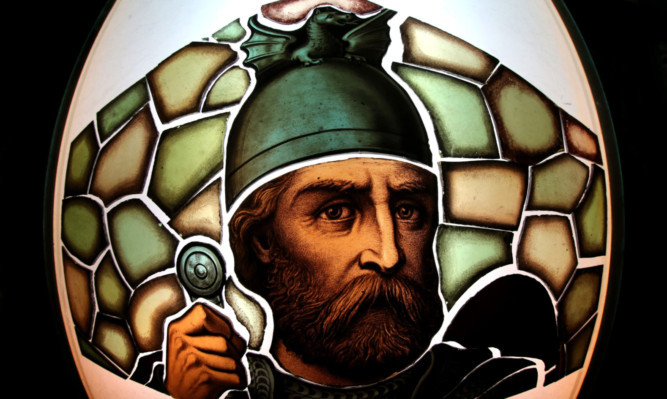A stained glass portrait of William Wallace will return to its rightful home in Stirling next month.
The portrait of the Scottish hero was removed from the National Wallace Monument before Christmas to be cleaned and mended for the first time since it was installed in 1886, 17 years after the monument itself was completed.
It is one of 11 stained glass windows in the Abbey Craig monument celebrating Scottish history.
They were made by James Ballantine and Son, who had previously made the armorial windows at the Scottish Monument and the west window at Dunfermline Abbey.
The portrait of Wallace is in the Hall of Heroes, which also features a stained glass portrait of King Robert the Bruce and two Scottish knights.
It was only removed for cleaning for the first time last year, although this proved no easy task.
The portrait of an armour-clad Wallace holding his famous broadsword consists of five separate panels, each of which had to be removed individually.
It has taken stained glass specialists Rab MacInnes and Linda Cannon more than three months to clean the window. The restoration involves releading parts of the window, cleaning the glass and repairing any breaks using silicone resin.
Ken Thomson, marketing manager with Stirling Tourism Ltd, the group responsible for looking after the monument, said he was delighted the restored window would soon be returning but warned the installation would also be a painstaking process.
“Work will start on March 2 but it will probably take at least a week to put them back,” he said.
Wallace, who was educated at Dundee High School, led a Scottish rebellion against the English king Edward I. He won a celebrated victory at Stirling Bridge in 1297 before suffering defeat at the Battle of Falkirk eight years later.
Following his capture by the English, he was taken to London where he was hung, drawn and quartered.
Last week it was revealed the original blueprint for the Wallace Monument had been professionally restored because it was becoming impossible to read.
Designed by John Thomas Rochead, the plans date back to 1862 and had been stored in the Stirling Council archives.
smorkis@thecourier.co.uk
